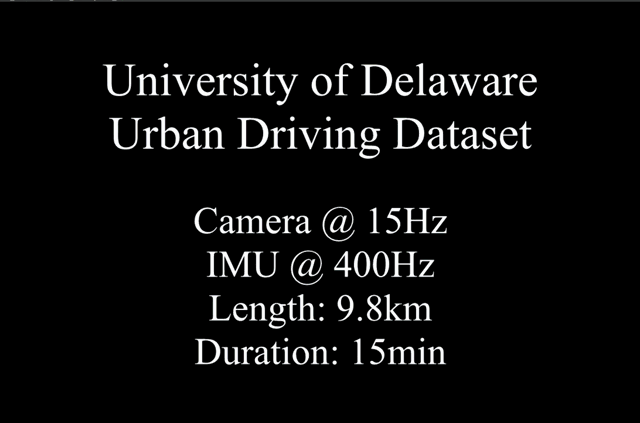R-VIO is an efficient, lightweight, robocentric visual-inertial navigation algorithm for consistent 3D motion tracking using only a monocular camera and a single IMU. Different from the standard world-centric algorithms which directly estimate absolute motion of the mobile platform with respect to a fixed, gravity-aligned, global frame of reference, R-VIO i) estimates relative motion of higher accuracy with respect to a moving, local frame (the IMU frame here), and ii) incrementally updates global pose (orientation and position) through a composition step. This code implements our robocentric sliding-window filtering-based VIO formulation that was originally proposed in our IROS2018 paper and presented in detail in our recent IJRR paper:
- Zheng Huai and Guoquan Huang, Robocentric visual-inertial odometry, The International Journal of Robotics Research (IJRR), 2022: download.
@article{huai2022robocentric,
title={Robocentric visual-inertial odometry},
author={Huai, Zheng and Huang, Guoquan},
journal={The International Journal of Robotics Research},
volume={41},
number={7},
pages={667--689},
year={2022},
publisher={SAGE Publications Sage UK: London, England}
}
- Zheng Huai and Guoquan Huang, Robocentric visual-inertial odometry, IEEE/RSJ International Conference on Intelligent Robots and Systems (IROS), Madrid, Spain, Oct 1-5, 2018: download.
@inproceedings{huai2018robocentric,
title = {Robocentric visual-inertial odometry},
author = {Huai, Zheng and Huang, Guoquan},
booktitle = {IEEE/RSJ International Conference on Intelligent Robots and Systems (IROS)},
pages = {6319--6326},
year = {2018},
address = {Madrid, Spain}
}
This work has been further extended in our IEEE RA-L paper below, and the proposed R-VIO2 is also open sourced.
- Zheng Huai and Guoquan Huang, Square-Root Robocentric Visual-Inertial Odometry with Online Spatiotemporal Calibration, IEEE Robotics and Automation Letters (RA-L), 2022: download.
@article{huai2022square,
title={Square-root robocentric visual-inertial odometry with online spatiotemporal calibration},
author={Huai, Zheng and Huang, Guoquan},
journal={IEEE Robotics and Automation Letters},
volume={7},
number={4},
pages={9961--9968},
year={2022},
publisher={IEEE}
}
IROS video (EuRoC MAV dataset): YouTube.
IJRR video (9.8km Urban Driving test): YouTube.
We have tested this code under Ubuntu 16.04 and ROS Kinetic.
Download and install instructions can be found at: http://wiki.ros.org/kinetic/Installation/Ubuntu.
Additional ROS packages needed: tf, sensor_msgs, geometry_msgs, nav_msgs, cv_bridge, eigen_conversions.
Download and install instructions can be found at: http://eigen.tuxfamily.org. Required at least 3.1.0.
Download and install instructions can be found at: http://opencv.org. Required at leat 2.4.3. Tested with 2.4.11 and 3.3.1.
First, git clone the repository and catkin_make it. Then, to run rvio with single camera/IMU inputs from the ROS topics /camera/image_raw and /imu, a config file in config folder and the corresponding launch file in launch folder (for example, rvio_euroc.yaml and euroc.launch are for EuRoC dataset) are needed, and to visualize the outputs of R-VIO please use rviz with the settings file rvio_rviz.rviz in config folder.
Terminal 1: roscore
Terminal 2: rviz (AND OPEN rvio_rviz.rviz IN THE CONFIG FOLDER)
Terminal 3: roslaunch rvio euroc.launch
Terminal 4: rosbag play --pause V1_01_easy.bag /cam0/image_raw:=/camera/image_raw /imu0:=/imu
Note that when testing the Machine Hall sequences, you should skip the data in the first few seconds (e.g., 40s for MH_01_easy) which are used for initializing the map for SLAM-based algorithms.
You can also run R-VIO with your own sensors (data) by creating a config file rvio_NAME_OF_YOUR_DATA.yaml in config folder and the corresponding launch file NAME_OF_YOUR_DATA.launch in launch folder, referring to our EuRoC example.
This code is released under GNU General Public License v3 (GPL-3.0).

